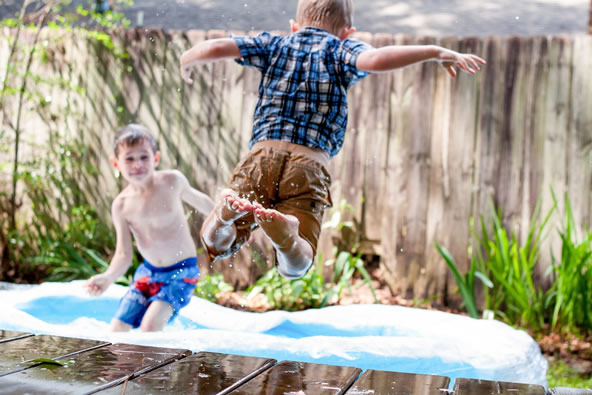WATER SAFETY
Preventing drowning, and what to do if your child drowns
Drowning doesn’t only happen in swimming pools or in open water like the sea or in rivers. A child can drown in 30 seconds, in just a few centimetres of water. It is a silent killer, and so it’s essential that you are constantly vigilant when you’re around water with children.



- Drowning the second biggest cause of accidental death among young children
- Children do not make any noise when they’re drowning. Drowning is a silent killer.
- A child can drown within 30 seconds.
- A child can drown in just 4cm of water.
- A child can drown in any water: in buckets, baths, ponds, lagoons, canals, vleis, swamps, the sea, dams, rivers, in paddling or swimming pools and even in drains.
- REMEMBER: Children don’t only drown when they’re swimming. They can also drown if they fall into water while fully dressed.
- Always be alert to possible dangers
- Teach children to swim as young as possible, including survival skills such as floating and treading water.
- Supervise children constantly while they’re in or near water. A child should never swim alone.
- If a child cannot swim, keep away from places where they can drown.
- Remember: buoyancy aids such as inflatable wings and tubes are only aids. Do not rely on them to protect your child from drowning.
- Warn against boisterous play in or near water, such as riding bicycles or running on dam walls or around swimming pools.
- Teach your child how to stay afloat in water with their clothes on.
- Never let children dive or jump into water they don’t know, or when people are in the way.
- If a child has cramp in the leg, relieve the cramp by pressing firmly on the area or by straightening the leg and flexing the toes upward toward the knee.
Rule no. 1: keep calm.
- Tread water or float.
- Find something that floats, to cling to.
Never try to swim against a current.
- In the sea, swim parallel to the beach.
- In a river, swim diagonally with the flow.



- Throw the child an object that you know will float; or offer a long object to hold on to. This is better than jumping in yourself — at all costs, avoid a double tragedy.
- Don’t let other children jump in the water to help others.
- If you must go into the water, take something for the child to hold on to rather than letting them hold on to you.
- Teach children not to pretend they’re in trouble in the water when they’re not.
- Do child CPR if the child is not breathing or has no heartbeat.
- Always take a child for medical observation after a near-drowning incident.
- Always supervise your children while they’re in or near water. Give them your undivided attention, even if they know how to swim.
- Never leave small children unattended in the bath. Ignore the phone and the doorbell. If the disruption is unavoidable, take the child with you when you attend to the call.
- Always empty baths, buckets, containers and paddling pools immediately after use. If you must keep them full, keep them behind locked doors.
- Always fit lids firmly on buckets of water and nappy buckets.
- Always keep toilet seats closed and install locks on toilet seat
- Always keep doors to bathrooms and laundry rooms closed
- Use a non-slip mat in the bath.
- Teach everyone in the household simple rescue methods and first aid — especially resuscitation methods.
- Always make sure there is an adult present when children are swimming.
- Always ensure that children who can’t swim wear approved floating aids, such as water wings.
- Never rely only on floating aids to prevent drowning.
- Swimming pools must be completely secured with fencing, a gate with child-proof lock, safety covers and pool alarms. Always close the gate.
- Check whether your neighbour’s swimming pool has adequate fencing and the gate is secure.
- Comply with municipal by-laws relating to water, swimming pools, hoses, boreholes and wellpoints.
- Remove toys lying around the pool, to avoid children tripping over them.
- Install a professional pool safety net to cover your pool.
- Always empty paddling pools when not in use.
- Always adhere to “no swimming” warning signs.
- Beware of strong currents. Children can be swept away, even on floating toys such as lilos.
- Children should always wear life jackets when on a boat, or when fishing from the shoreline.
- The sea is unpredictable. Supervise children continually.
- Accidents happen in an instant. To allow a child in a boat or canoe without a lifejacket is asking for trouble. The same applies for fishing from the rocks.
- How to swim with clothes on, float and tread water.
- To only swim when an adult is present.
- Not to play, run or ride a bike around swimming pools.
- To only swim in designated swimming areas and if a lifeguard is on duty.
- How to deal with currents, undertow and uneven surfaces in open water.
- To never jump in to help when others are in trouble.
